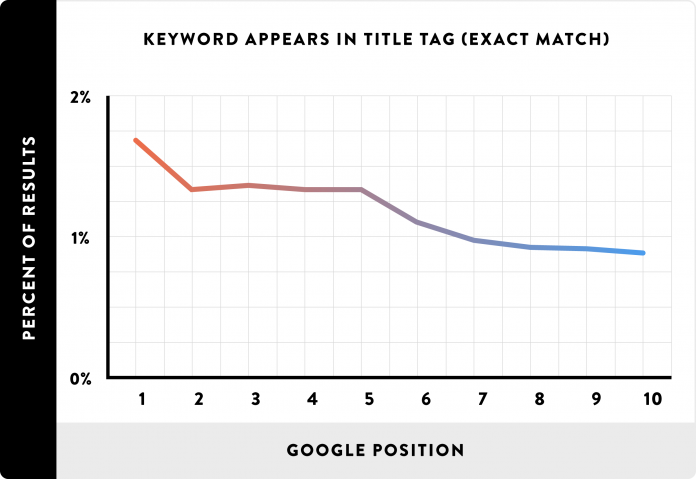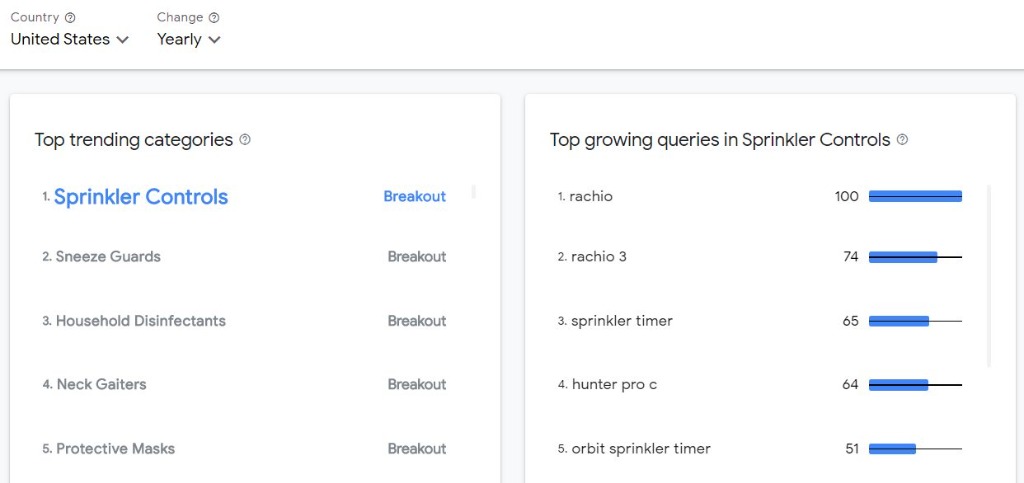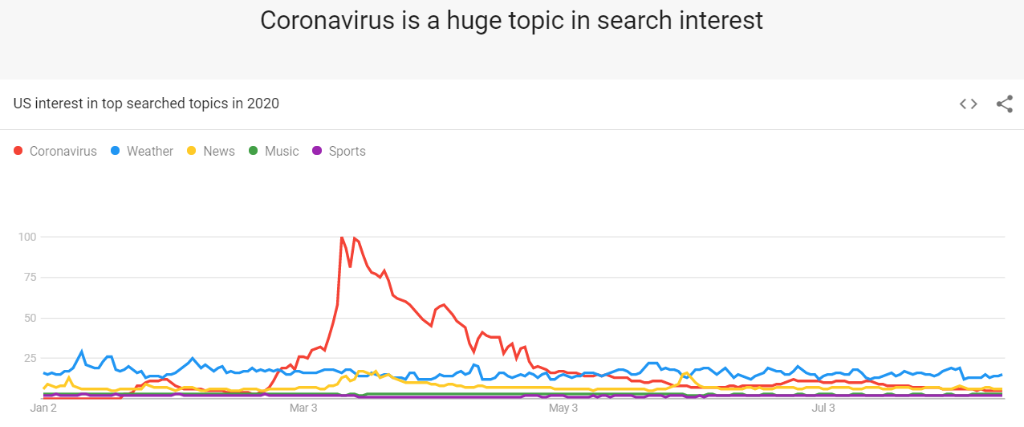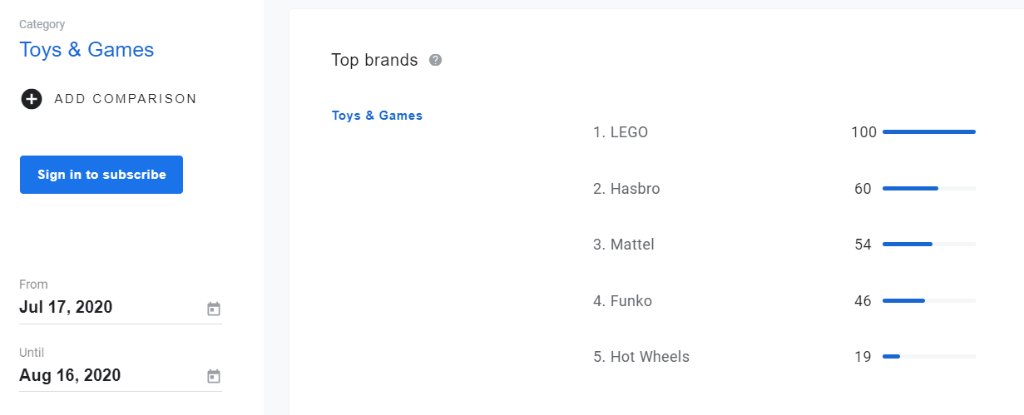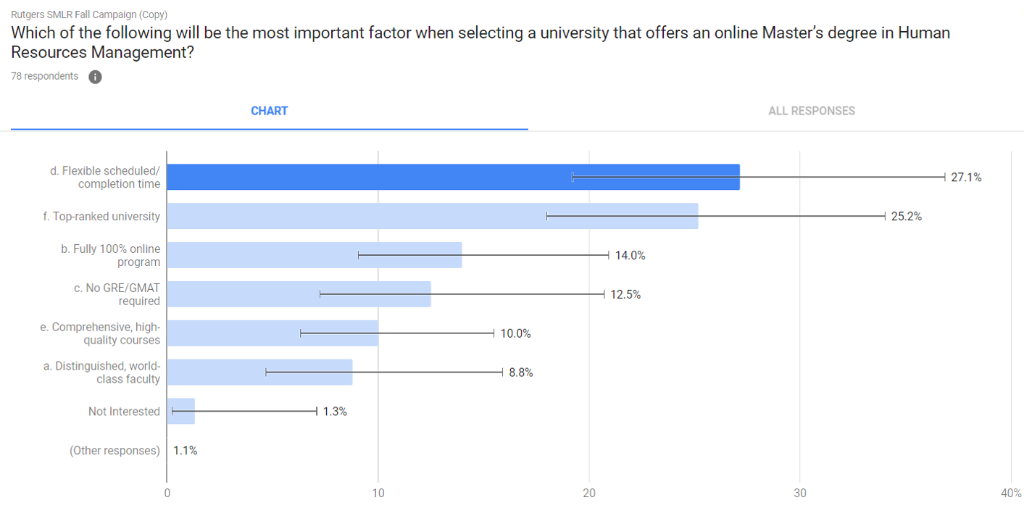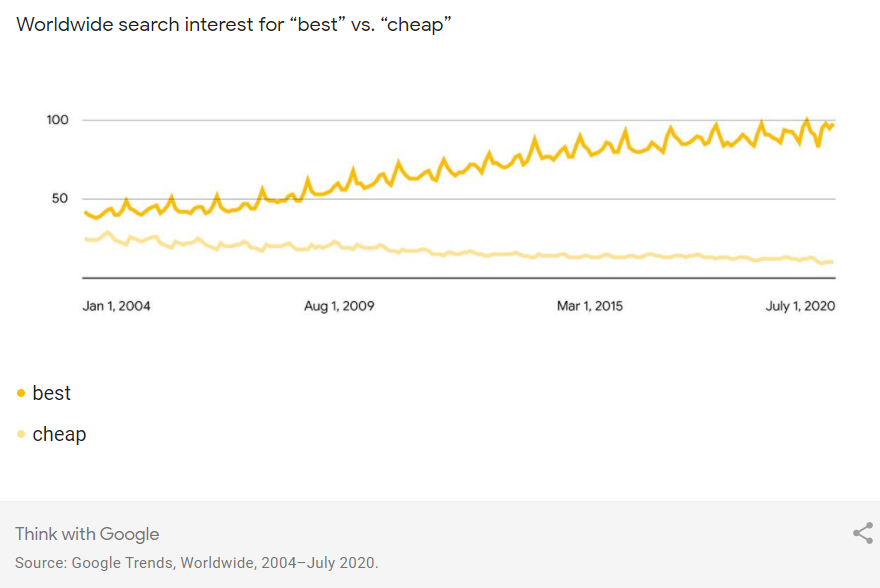7 Google Tools to Use for Keyword Research Today
Consumer behavior is changing rapidly and unpredictably during the coronavirus pandemic.
This is why it is more important than ever to conduct keyword research to understand the latest changes in consumer intent.
Although 100% of true SEO professionals understand how to leverage Google Search Console and know which keyword tools have helped them in the past to increase traffic, ranking, and visibility in search results, it is time to think outside the box.
Even a bi-weekly overview can help your business or clients pivot to create more relevant content as they navigate the "new normal".
This means that you need to take advantage of resources that did not exist before March 11, 2020, the date the World Health Organization (WHO) declared the coronavirus outbreak a pandemic, or use additional tools to verify your assumptions.
Here are some places that I now visit practically every day of the week and some tools that I have found in the toolbox that I rarely used before having to start taking care of strange things that clash at night.
Advertisement
Continue reading below
1. Retail categories on the rise
In May 2020, Think with Google launched an interactive tool called Rising Retail Categories to help us understand:
Categories of retail businesses experiencing strong growth in Google Search.
Les endroits où ils poussent.
Les questions qui y sont associées.
For example, the most trending categories in the United States from year to year include:
Sprinkler control.
Des pare-haleine.
Les désinfectants ménagers.
Guêtres de cou.
Masques de protection.
You can also focus on the main categories of trends to discover month after month:
Food container covers (+100%).
Crayons (+100%).
Matériel médical (+90%).
Stylo & ; Étuis à crayons (+70%).
Bébé & ; Toddler Outerwear (+60%).
Next, address the most trendy categories week after week, and examine them
Blank identity cards (+40%).
Tarte & ; Garnitures de pâtisserie (+30%).
Play Mats & ; Gyms (+30%).
Les baby-foot (+30%).
Guêtres de cou (+30%).
Tableaux noirs (+30%).
If your business or your clients manufacture any of these products, this is an opportunity for you to identify a key trend and become a hero.
Advertisement
Continue reading below
2. Trends in coronavirus research
In March 2020, Google launched the Coronavirus Search Trends website.
From late February to early May, research on the topic of coronaviruses has experienced a renewed interest.
Since then, interest in coronavirus research has fallen below weather-related topics and is now roughly equal to interest in news research, but still remains above sports and music topics.
3. The American Economy & COVID-19
Recently, Google added a new section to its Coronavirus Search Trends site that focuses on the American economy and COVID-19.
How has the coronavirus pandemic affected searches around the economy?
How do they compare today to searches conducted in the past?
Scroll down the page to see the search interest for the term, recession, since 2004.
And keep scrolling down the page to see the points of interest in search in other words, such as unemployment benefits, food bank, food vouchers, and mortgage forbearance.
You can also consult the map of the country to see where the research interests are in terms of debt, bankruptcy, and inability to pay rent.
4. Shopping Overview
Google launched Shopping Insights in October 2015, but I rarely used this tool before the COVID-19 recession, even though it allows you to see how your business or clients are positioned compared to your competitors, and it allows you to track competing products in your category.
In these "extraordinarily uncertain" times, it's a lifesaver.
It is painfully obvious that the disruptions this year make it difficult for retailers to plan vacations.
Mais Shopping Insights helps them stay informed about what buyers want and keep up with trends in their category.
How can Google provide this information on purchases?
According to Think with Google, in 63% of purchase scenarios, buyers go online to conduct research before making a purchase decision, whether they buy online or in a store.
Advertisement
Continue reading below
With daily research data for over 55,000 products, 45,000 brands, and nearly 5,000 categories in the United States, Shopping Insights helps you better understand online customers' purchase intentions and make more informed merchandising and marketing decisions on online and offline channels.
For example, the main brands in the Toys & Games category, according to data from July 17 to August 16, 2020, are:
LEGO.
Hasbro.
Mattel.
Funko.
Hot Wheels.
So, if you are planning a Saturday for small businesses or for the holiday season, you know which brands to put on the shelves.
5. Market Research
Google launched Market Finder in November 2017, but I have rarely used this tool in the past.
Advertisement
Continue reading below
But she changed the game by helping clients navigate the "new normal".
For example, I work with the Rutgers School of Management and Labor Relations (SMLR) to generate applications for its online professional Master's program in human resource management.
By entering the URL of SMLR into Market Finder, I was able to calculate which regions offer the best growth opportunities, based on key metrics for the categories I have chosen.
In the United States, it is California, Texas, and Florida.
For Rutgers, which is the State University of New Jersey, this has been a major surprise, as it represents a significant change from pre-pandemic geographic trends.
6. Google Surveys
Google Consumer Surveys was launched in March 2012. It was rebranded as Google Surveys in October 2016.
It has become one of the essential tools in my toolkit for obtaining valuable insights into the minds of my clients' target audiences.
Advertisement
Continue reading below
If you haven't used it yet, Google Surveys is a market research tool that collects data from survey questions that you write.
Internet users answer your survey questions to access high-quality content on the Google Display Network.
In return, content creators are paid as their users answer your questions. Google then aggregates and analyzes the responses through a simple online interface.
Yes, I also use the search console and keyword tools. But these tools tell me what people are searching for.
They do not tell me "why" people conduct these surveys.
That's why I have used Google Surveys several times to "see in the corners or take a look over the walls", as toy periscope ads often say.
Only now, Google surveys help me discover search intent, which is much more valuable.
I have often used screening questions to ensure that the respondents to a particular survey represent the niche audience that my client is targeting, rather than just anyone and everyone who has used a search term.
Advertisement
Continue reading below
And Google Surveys allowed me to obtain answers in a few days instead of several weeks with more traditional survey methods.
Oh, and did I mention that it was cheap?
No, it's not free, but prices start at $0.10 per completed survey, although I usually pay around $1.50 per completed survey because I use surveys with 2 to 10 questions targeting specific age, gender, or location demographics.
For example, keyword research will generally help me select a keyword phrase to optimize the title and heading of a landing page.
But Google Surveys will help me ensure that the content of this landing page truly meets the consumer's intention behind the query.
Why does this have value?
Because you can do more than just generate organic search traffic.
SEO experts can generate organic search traffic that converts into qualified leads or online sales.
Advertisement
Continue reading below
7. Google Trends
Google Trends was launched in May 2005, making it the oldest tool on this list.
And many SEO professionals do not use it as often because it does not provide data on organic search volumes.
But these are not normal times.
And by finding information that can be processed within minutes of a real event, SEOs can secure a seat at the table where strategic decisions are made.
For example, I recently gave a course for the New Media Academy (NMA) on "Creating a digital marketing strategy" to a group of over 100 business professionals in the United Arab Emirates.
And one of the recent articles that I shared with my AMN class was titled "How People Decide What They Buy".
It was written by Alistair Rennie and Jonny Protheroe, who both work in Google's consumer insights team, and it was published last month in Think with Google.
Advertisement
Continue reading below
Rennie and Protheroe used Google Trends to examine the global search interest for the terms "best" and "cheap" from January 1, 2004 to July 1, 2020.
Why does this have value?
Because you can do more than just generate organic search traffic.
SEO experts can generate organic search traffic that converts into qualified leads or online sales.
Advertisement
Continue reading below
7. Google Trends
Google Trends was launched in May 2005, making it the oldest tool on this list.
And many SEO professionals do not use it as often because it does not provide data on organic search volumes.
But these are not normal times.
And by finding information that can be processed within minutes of a real event, OSEs can secure a seat at the table where strategic decisions are made.
For example, I recently gave a course for the New Media Academy (NMA) on "Creating a digital marketing strategy" to a group of over 100 business professionals in the United Arab Emirates.
And one of the recent articles that I shared with my AMN class was titled "How people decide what they buy".
It was written by Alistair Rennie and Jonny Protheroe, who both work in Google's consumer insights team, and it was published last month in Think with Google.
Advertising
Continue reading below
Rennie and Protheroe used Google Trends to examine the global search interest for the terms "best" and "cheap" from January 1, 2004, to July 1, 2020.
